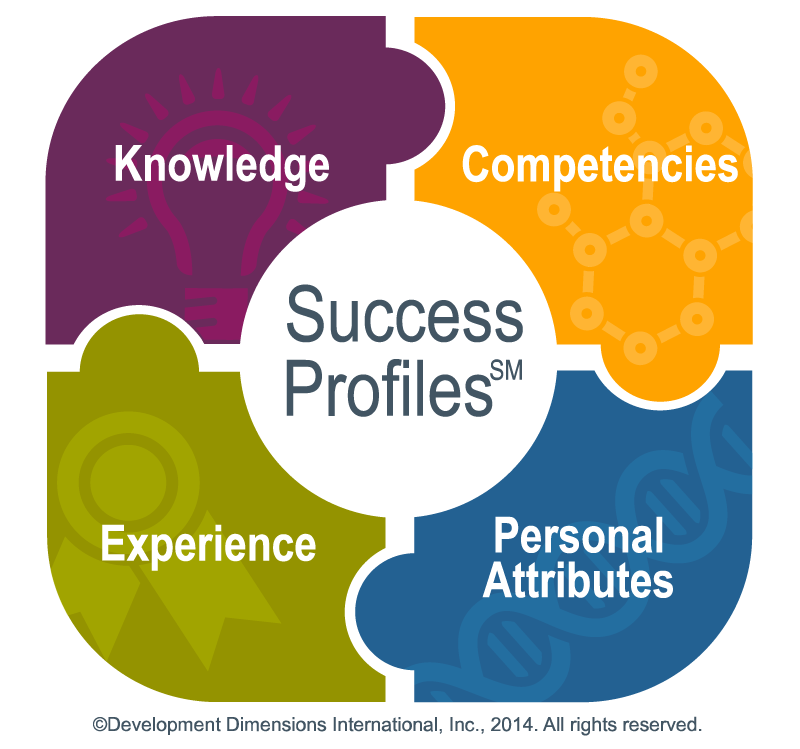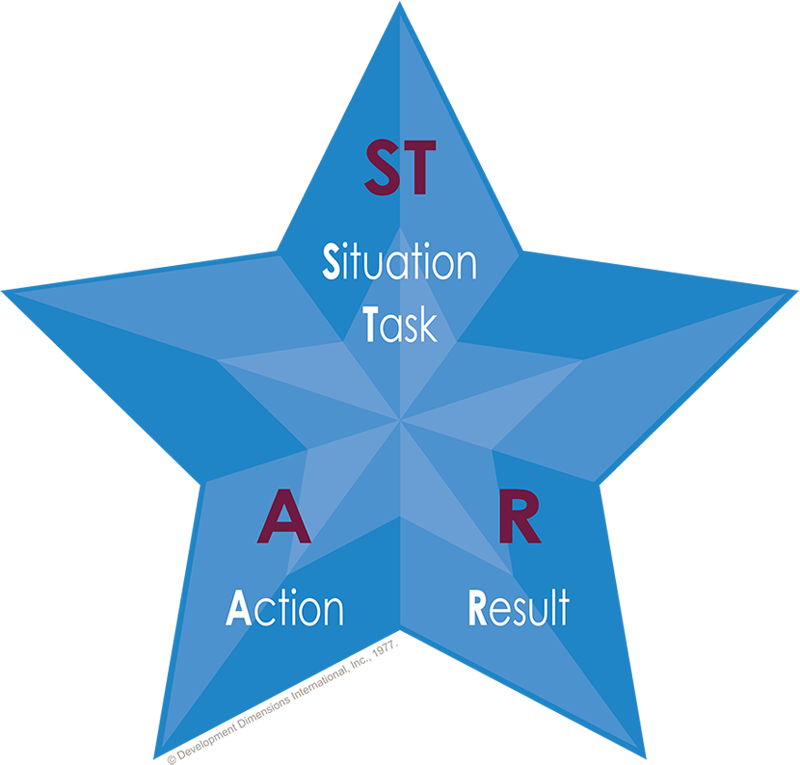Defining Hiring Bias and Answering Your Most-Asked Questions
Making a hiring decision based on bias is one of the biggest errors a leader can make. One wrong judgment and you might be stuck with a poor performing team member. Or worse, you waste months investing in them, only for them to leave (voluntarily or not!) within a year.
Here are just a few common examples of phrases I’ve heard in interview debriefs over the years that point toward hiring bias:
- We get a “good vibe.”
- He’s someone I would grab a beer with.
- I’ve heard great things about her.
- He would be an excellent “fit.”
- She attended the same university as me.
And the list goes on and on. While some of these opinions might seem harmless, we often don’t realize the danger they can bring to our employer. Quite often these seemingly innocent thoughts unknowingly cloud our better judgement.
What is hiring bias?
It’s likely that some form of hiring bias exists in your hiring process. The interview process itself is about making judgements, and bias is exactly that.
Hiring bias is an inclination, opinion, or feeling about a person that we make when we’re trying to decide if they’re right for a job. Those opinions and feelings could be based on anything from the clothes they wear to their accent to the neighborhood where they live.
This bias occurs because our brains take shortcuts to help us make decisions quickly. The candidate lives in a wealthy part of town. Must mean she’s successful and therefore will be good in the job. Or, the candidate has three kids. Must mean he is going to be too preoccupied with family duties.
Not letting bias influence hiring decisions is tricky because we’re often unaware of it. This unconscious bias—also known as implicit bias—is often characterized as a feeling that the person is or isn’t the right fit for the job, yet we can’t place our finger on why. This can cause hiring managers to make selection and promotion decisions based on mistaken assumptions around capability and motivation.
The good news is that due to the policies, laws, and a drive toward a more diverse workplace, more is being done to ensure equal opportunity and to prevent biases based on race, age, gender, physical ability, religion, and many other things impacting hiring processes.
However, even with these policies in place to prevent discrimination based on identity, our conscious or unconscious biases can extend to other attributes as well, which aren’t protected by law. For example, you might not want to hire someone because they aren’t outgoing enough. Or you only want people with a degree from an Ivy League school. These biases can be baseless when it comes to how someone will perform in the role.
What’s the problem with bias in our hiring process?
If we let our biases get in the way of the facts, we are more likely to make bad hiring decisions. We might even unknowingly decide not to choose candidates who have more to offer or who would help us create a more diverse workforce.
And as we know, the more diverse a workforce is, the more innovative and better we are at problem solving and the more profitable the organization. Conversely, according to Harvard Business Review, aside from having a negative impact on overall team performance, bad hiring decisions can cost us up to 400% of an annual salary and are the reason for as much as 80% of employee turnover. It’s clear that we want to do what we can to reach more objectivity in our hiring process.
The questions then become: What steps do we take to get there? How do we recognize unconscious bias? How do we develop a process that will create greater fairness in our recruitment process? We’ll answer all of these questions in this blog.
3 Hiring Bias Traps to Avoid
How can hiring bias enter the recruitment process? Let’s look at three ways bias can get in the way of making the right hiring decision.
1. We are too closed-minded.
We often let our own preferences for a certain profile exclude candidates, whether it’s an internal or external candidate. We should open ourselves up to a more diverse workforce by going beyond what we “think” the perfect hire should be.
Perhaps we are a firm believer that the person we are hiring should have a certain education or experience in a certain field. A “need to have” I’ve heard a lot is that a candidate must have local or country-specific experience. This is still a common reason for a resume to be overlooked.
Yes, for some specialized roles, perhaps local experience is truly necessary. However, for many other roles, I’d instead ask, what fresh perspectives could someone who knows a different market bring to our business? How could that diversity fuel our performance?
2. We prefer those who are similar to us.
We’ve heard it before, “They remind me of myself 10 years ago” or “We seem to have a lot in common.”
Affinity bias is one of the most common hiring biases. We often favor those who are of the same gender, race, speak the same language, or are from the same country or background as us.
This is one of the more difficult biases to break. It requires self-discipline, self-reflection, and a strong adherence to objective measures we can implement to reduce bias. We’ll get to these objective measures in more detail below.
3. We associate certain characteristics or identities with competence.
When hiring, we often conclude that because a job candidate has a certain identity or presents in a certain way, that they are more likely to be suited for the role. For example, it’s quite common to fall into the trap of perceiving the extroverted, self-assured candidate as more competent than a candidate who is more introverted or less assertive.
Or we might evaluate the confident, assertive female in a more negative light than a male with the same profile, perhaps concluding that the more assertive female will present as “too forceful” while describing the male as having “strong leadership potential.”
These judgements are not necessarily a reflection of the candidate’s actual potential. However, because they are often ingrained into us from a young age, they tend to stick with us unless challenged. To avoid these traps and many others, we need to focus our attention on the qualities that we do need to look for.
(For further reading on unconscious bias, my colleague Julie Yoon outlined the Seven Types of Unconscious Bias That Affect Everyone.)

Managing Hiring Bias: What qualities should we be looking for?
We need to begin with the end in mind. What does success look like in the role? How do you define hiring criteria? What will I need to find out about qualified candidates?
At DDI, we call this a Success ProfileSM. A Success Profile is a complete picture of job success. It’s a combination of knowledge, experiences, competencies, and personal attributes.
Knowledge and Experience
We usually can identify knowledge and experience by reviewing a candidate’s resume. What technical skills do they have? What’s their education? How many years of leadership experience?
Many employers tend to overly focus on knowledge and experience. Yes, it is important. However, we should focus much more of our effort into learning how effectively someone exhibits the competencies and personal attributes needed for success. Especially when the most common causes of underperformance or failure in a role comes down to competencies and personal attributes.
Competencies
We define competencies as the behaviors that you need to successfully perform in a certain role. For example, for a frontline leader role, it’s likely we will want to hire someone who is emotionally intelligent, able to coach and develop others, and who can facilitate change.
Personal Attributes
Personal attributes are who people are. They are personal dispositions and motivations that relate to job satisfaction, job success, or job failure.
Part of personal attributes includes the concept of “job fit,” which is tightly tied with a person’s motivation for doing their job. But how do you evaluate for fit?
The Concept of Fit: Personal Dispositions and Motivation
Fit is not about a good vibe or feeling a personal connection with someone. So, what makes someone a good fit for a job? While part of it is finding someone who “can” do the job, equally important is whether they will “want” to do the job. This is what we call motivational fit; how satisfied someone is likely to be performing the responsibilities required of the role.
For example, is the individual motivated to lead? Do they want to travel? How comfortable are they working in a fast-paced environment? Are they motivated to spend their day supporting customers? Will they value a culture of innovation?

How to Objectively Gather Job Relevant Information
Once we have defined our selection criteria, the next question is, how do we get this info from candidates? And then how can we make informed hiring decisions?
Here are ways we can bring greater objectivity into the interviewing process and also manage our conscious and unconscious biases.
Behavioral Interviewing
Introduce a structured, behavioral-based interviewing system targeted to competencies needed for success in the job. And coach managers to ask behavioral questions based on past examples.
If you think of a family member you’ve lent money to and they never paid you back, chances are we can predict that next time you lend them money you’ll get the same outcome. In the same way, experiences that candidates share are also likely to predict their future performance.
To ensure we have the full picture, asking two to three behavioral questions per competency and sticking to a model such as the STAR interviewing method is incredibly helpful when gathering responses.
It also allows us to identify where we need to probe further to gather all the details. For example, what actions did the candidate specifically take? What was the result? What did they learn from the situation? What did they enjoy most about the experience (to assess motivational fit)?
Many of us avoid asking these probing questions because we feel it gives the candidate an advantage or we simply don’t recognize that we don’t have the full picture. The reality is that an effective use of further probing ensures we gather all information and avoid making assumptions.
Multiple Interviewers and Data Integration
It’s best practice to include a range of people in the hiring process. Typically, this might include a recruiter or HR representative, hiring manager, and others who are close to the role. The more diverse we can make the hiring committee, the better.
Having a meeting debrief after the interview, or what DDI calls a data integration session, is a great way to discuss scores, examples, and compare candidates. Making time for this important step and ensuring everyone has a voice can also have a huge impact on how objective your hiring decisions are.
How to Train Hiring Managers on Behavioral Interviewing
How can interviewers know what questions to ask? How to challenge their biases? How to know if a response is a "good" or "bad" example? It’s a great idea to train your managers on behavioral interviewing to equip them with these skills and more.
Even the most seasoned interviewers are subject to bad habits and hiring bias and interviewing can be nerve wracking for those new to it. Without an introduction to impactful behavioral interviewing, interviewers can form their own opinions around best practices, which is certainly one way to make a poor hiring decision.
We should also be focused on training interviewers to create a positive experience for candidates. Why? Putting candidates at ease will help to reduce their anxiety and will help us get the best from them.
What are other selection tools for hiring?
The use of personality assessments or job simulations can help add another layer of objectivity to the process. These tools are known for their ability to accurately predict job performance.
“Day in the life” type of assessments provide a variety of data points through exercises like role-playing activities, presentations, interactions, and decision-making activities. The results provide us with insight into how an individual is likely to behave in the role.
Hiring Bias: A Barrier to Reaching Potential
Hiring bias presents a huge problem, not just for HR and recruiters, but for anyone who cares about the success of their business. Unfortunately, bias isn’t going anywhere. Why? Our brains are quite simply wired for bias. But we can take steps to create a more well-rounded, objective hiring process.
Not only will doing this help your business hire the best people for the job, you’ll also reap the benefits of having a more diverse workforce, which is a proven factor for increased business performance. But also, from an integral and ethical perspective, having a more diverse workforce is just the right thing to do.
To learn more, watch our on-demand webinar, How to Turn Your Managers into Great Interviewers. Download an overview of Targeted Selection®, the most accurate behavioral interviewing system in the world.
Gemma Knocker is a Senior Consultant and Organizational Psychologist, originally from Ireland. She is now living in Toronto and part of the DDI team in Canada. She has a passion for diversity and inclusion and works extensively with clients to implement impactful leadership selection and development solutions.
Topics covered in this blog

